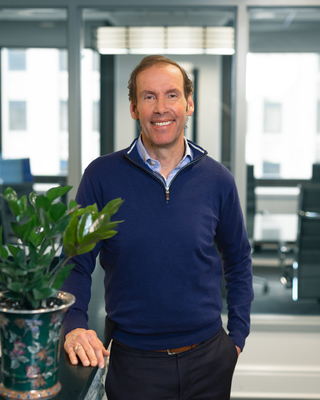Education | Aug 10, 2022
Is It Time to Rebalance Our Portfolios, or Just Our Thinking?
David B. Root, Jr.CFP®
CFP®

Jerry Seinfeld: "If every instinct you have is wrong, then the opposite would have to be right.”
George Costanza: “Yes, I will do the opposite. I used to sit here and do nothing, and regret it for the rest of the day, so now I will do the opposite, and I will do something.”
It may be a good time to reflect on the current economic environment and whether our portfolios are properly balanced for the challenges ahead. When listening to clients, our discussions go further than simple rebalancing of investment portfolios. Such a time of high volatility requires many of us to also rebalance our emotions. The amount of stress, concern and confusion being felt by so many today can sometimes cause us to do things we may regret later. We don’t want to find ourselves impulsively reacting to headlines about inflation, recession, stagflation, gas prices and other factors causing market uncertainty.
We may also need to rebalance our expectations, especially in terms of how some asset classes may or may not fit with our financial goals. We have entered a whole new world of Cryptocurrencies, Special Purpose Acquisition Companies (SPACs), non-fungible tokens (NFTs) and an excess of other options for investors. How does an investor make sense of all of this when, fundamentally, corporate earnings have typically determined stock market performance? Moreover, how does one determine earnings for crypto or SPACs with unproven business models?
Even more complicating is how many currently believe we are at the beginning of an earnings recession. If so, now is the time to balance the right way. In simple terms, when the market is this volatile, we should be positioning for losing less now to make more later. We need to play the game in front of us, and to do so we should call upon examples in history for clarity. As I have said before, history doesn’t repeat itself, but it often rhymes. But does today’s game rhyme with the prolonged 2008 collapse or with 2020, when a shallow recession with a 30% decline saw a rapid recovery?
In many respects, the answer is neither 2008 nor 2020. We think it more closely resembles 1999 through 2002, when many newer, shiny object investments of the dot-com era were exposed for burning cash flow and ultimately failed, leaving many investors holding the bag. However, some of the stronger survivors don’t just exist today, they dominate the market: Amazon, Apple, Google, Facebook among others. It’s possible for some of today’s shiny new businesses to become the next Amazon, but there are also a lot of speculative investments without cash flows or viable economic models.
So, the first rule in rebalancing our emotions on growth investments is to not chase this market’s shiny objects. Not yet. Our firm continues to focus on established companies with the most durable earnings capabilities as our core strategy. These are generally mega-cap, dividend-paying stocks with strong cashflows, pricing power, and earnings prospects. Such investments also came to the forefront during the fall of the dot-com era.
So, how long will this bear market last? Well, using historic numbers in terms of duration, our current market crash has only lasted 20% as long as the 2000 event and only 37% as long as 2008. But 2000 and 2008 were not entirely the same market conditions that we are experiencing now. For comparison purposes, let’s go back to lessons learned in the times when inflation was the driving issue.
Based on outcomes during similar periods of high inflation, it is feasible that the current bear market could carry well into 2023. This reasoning is anchored to the Federal Reserve’s policy on interest rates during 1969, 1975, and 1981 where inflation was rapidly accelerating alongside the federal funds rate. When the federal funds rate in 1969 stopped accelerating in September 1969, the market bottomed 9 months later after a -25% drop. During 1975 when the Fed stopped hiking rates, the market bottomed 3 months later after a -26% decline. And when the fed funds rate stopped accelerating in July 1981, the market didn’t bottom out until 13 months later after a -21% drop.
Now, most analysts are predicting the Fed won’t stop raising rates until mid-2023. This can only strengthen our resolve to stay positioned in tried-and-true assets that have staying power. At least until we feel safe that the bottom has been reached, likely months later.
Even though we all feel better after an extraordinary July bounce, we need to keeps things in proper perspective. The real traps today may be in ‘catching falling knives’, or trying to buy assets just because they have sustained larger declines. How do you protect yourself? Do not try to time the market. Do you think it would be wise to rebalance into assets that are down two-thirds? There is an aphorism in medicine when someone is having a seizure…Don’t just stand there, do nothing!
It isn’t easy to rebalance our emotions toward pragmatism when we are looking at many potential growth opportunities in the stock market. When the time is right, we will revisit those opportunities. But only when we feel there is value – perhaps after the earnings recession has run its course. Sometimes the emotional side of rebalancing can be the most difficult part of investing. It can sometimes require us to do the opposite of what looks to be the right move at the time. That’s where having professional guidance can bring clarity.
Although challenging, this is the game in front of us and playing the right way now ensures we are going to be OK in the long term.
Thanks for reading.
Dave
This material has been provided for general, informational purposes only, represents only a summary of the topics discussed, and is not suitable for everyone. The information contained herein should not be construed as personalized investment advice or recommendations. Rather, they simply reflect the opinions and views of the author. D. B. Root & Company, LLC. does not provide legal, tax, or accounting advice. Before making decisions with legal, tax, or accounting ramifications, you should consult appropriate professionals for advice that is specific to your situation. There can be no assurance that any particular strategy or investment will prove profitable. This document contains information derived from third party sources. Although we believe these third-party sources to be reliable, we make no representations as to the accuracy or completeness of any information derived from such sources, and take no responsibility therefore. This document contains certain forward-looking statements signaled by words such as "anticipate," "expect", or "believe" that indicate future possibilities. Due to known and unknown risks, other uncertainties and factors, actual results may differ materially from the expectations portrayed in such forward-looking statements. As such, there is no guarantee that the expectations, beliefs, views and opinions expressed in this document will come to pass. Information presented herein is subject to change without notice and should not be considered as a solicitation to buy or sell any security. All investment strategies have the potential for profit or loss. Asset allocation and diversification do not ensure or guarantee better performance and cannot eliminate the risk of investment losses.

David B. Root, Jr.
CFP®